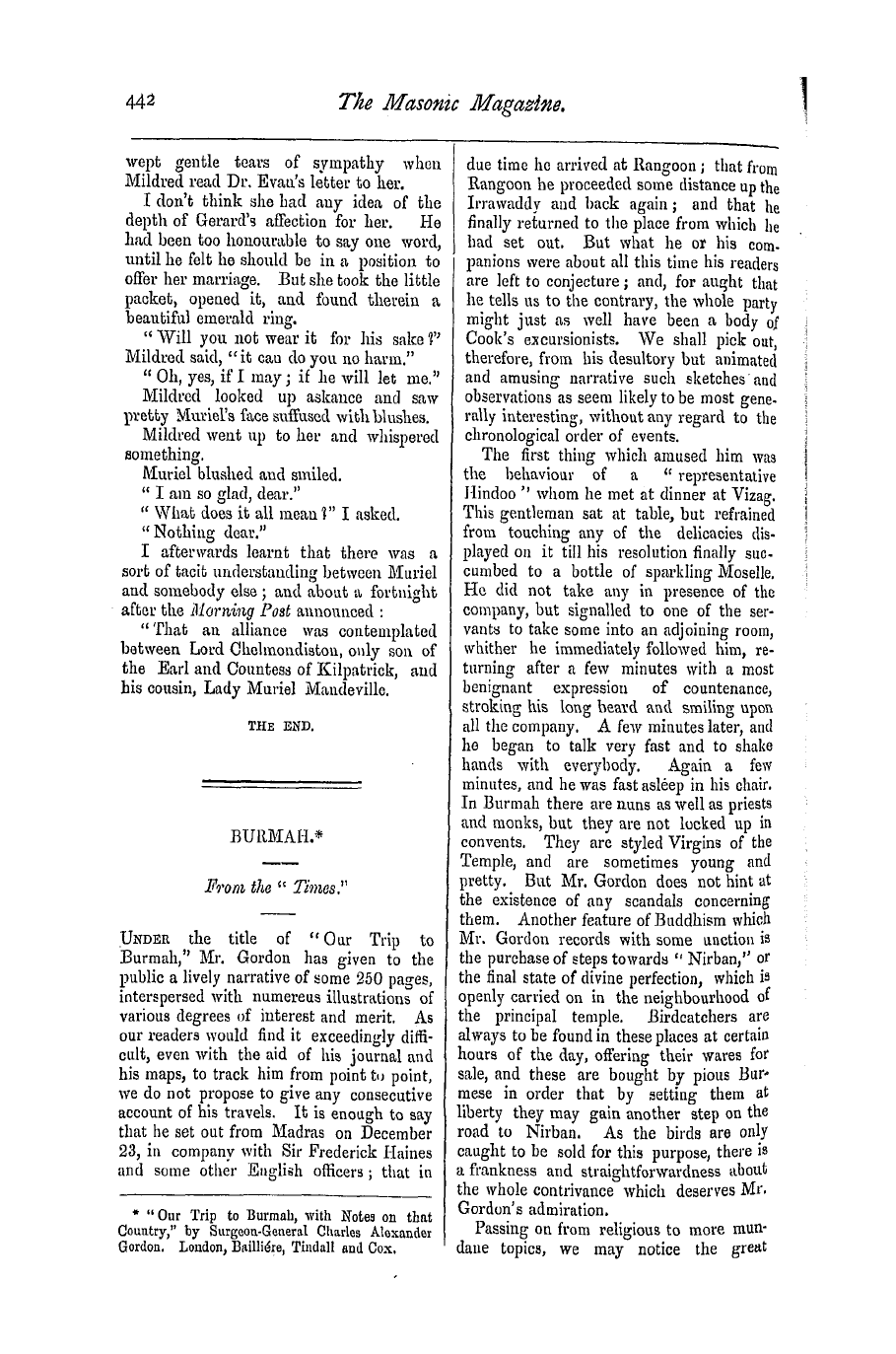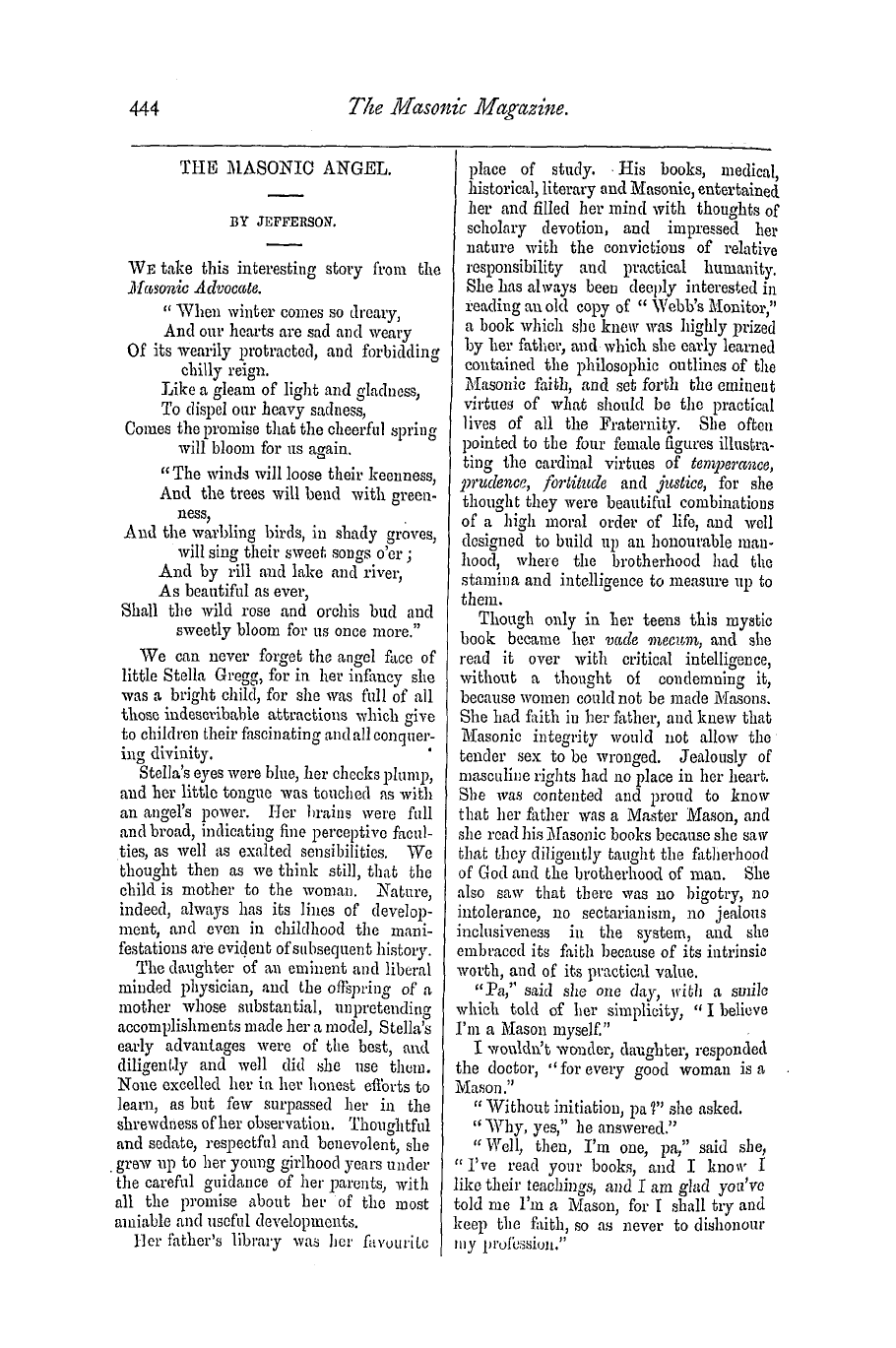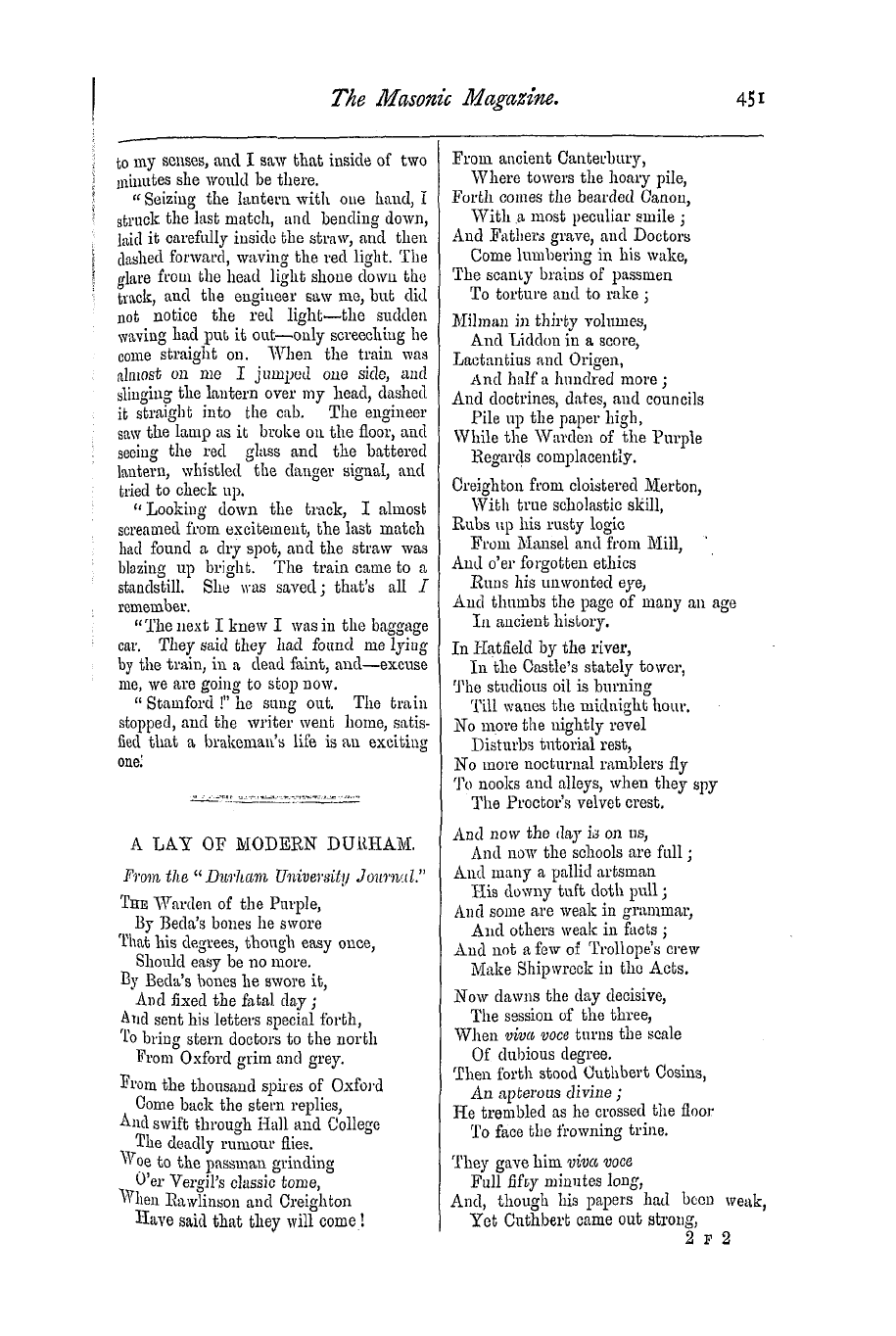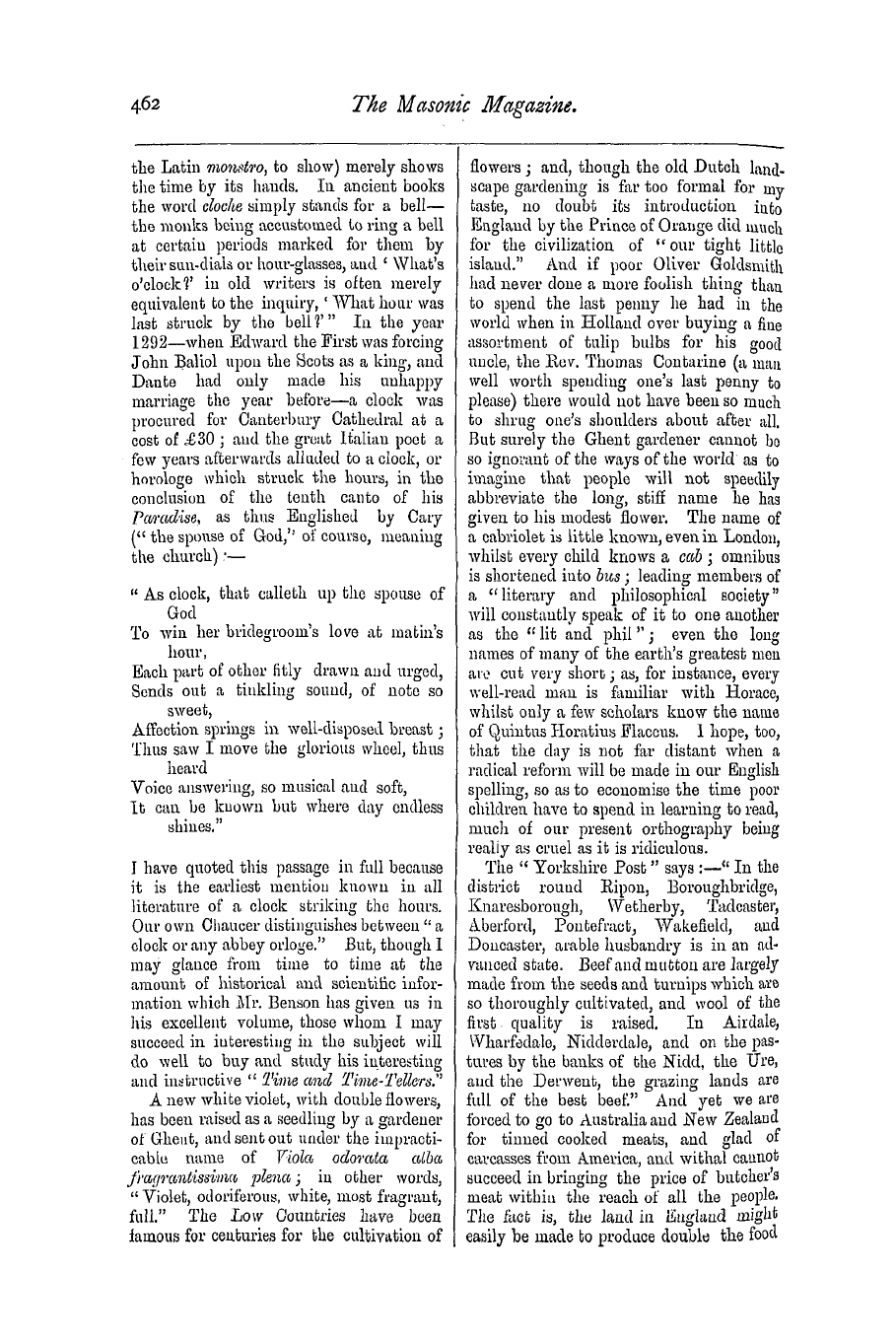-
Articles/Ads
Article ST. PAUL'S CATHEDRAL. ← Page 3 of 3 Article CHURCH GARDENS. Page 1 of 3 →
Note: This text has been automatically extracted via Optical Character Recognition (OCR) software.
St. Paul's Cathedral.
pezoidal form , containing the head of a / ; cherub in gold , surrounded by white iving 4 i on a dark ground . All the five lowei \ compartments have their figures in colours , aud all but the hig hest and lowest have grounds of gold ; the surrounding
mouldings are white relieved Avith gilding . Above the highest compartments round the opening to the lantern runs a blue band enriched with large gold stars . Over this is another band , with an inscription in blue or black letters on a gold
ground referring to the completion , not of the mosaic decorations , but of the construction of the cupola . Through the opening is seen the hemispherical ceiling of the lantern , on Avhich is a mosaic by Provenzale , representing the Almighty , dis
but , OAving to its distance , barely - tinguishable from beloAv . " Mr . Oldfield then asks wherein lies the superiority of the Dome of St . Peter ' s over the many other cupolas adorned in various colours with figure-subjects of the hig hest relig ious interest , Avhich since the days of Brunelleschi have sprung up
throughout Italy ; and he finds an answer in the fact that it conforms more nearly than any other he knows to the principles which ought to regulate the ornamentation of cupolas . The decorator , he says , has set off the size and form of the dome itself bappropriate treatment of its
sury face : second he has suggested by figure subjects such a tone of thought as accords with the purpose of the building ; third , he has gratified the eye by combining richness and harmony of colour ; the first an architecturalthe second a religiousand
, , the third a sensuous end . Such is the way in Avhich he would have the dome of St . Paul ' s decorated , and there are special reasons , he thinks , for now selecting this part of the Cathedral as the field for beginning the work of completion ,
particularly as this is the part of the work which may be attempted with least risk of fanning aneAv the noAV smouldering embers of former controversy . If his views are approved in princip le , Mr . Oldfield thinks the execution of them is a question of more detail .
Church Gardens.
CHURCH GARDENS .
u " x \ i iBBA ^ /" / \ sfo / m ^ " Garden . " ^ fvDo ^ y — THERE is no p lace Avhere our backAvardness in all that is best and most essential in gardening is more apparent than in the
churchyard . All the advantages that could be desired for a charming garden are sometimes combined in these places , yet the rule is to see them as bare as a housetop , ancl much less interesting as regards vegetation than the very ditches by Avhich
they are surrounded . This is true , not of churchyards in toAvns , but in the fairest parts of our fairest counties . Indeed , in cities and toAvns , trees and shrubs often embellish the space around the church , Avhereas in some beautiful parts
of Kent , or Surrey , or Warwickshire , it is common to see a church Avithout a particle of graceful vegetation on either the walls of the church , the ground , or the low walls that sometimes surround the Avhole , yet no spots are more easily converted into lovely gardens ; and in these days of costly church decorations from Southampton Street one may surely not in vain , call attention
to the wants of the church garden . Thousands spent on the most elaborate artistic decorations indoors Avill never produce such a beautiful and all-satisfying result as a few score pounds judiciously spent in converting the churchyard into a
church garden . There are several reasons Avhy churchyards are more than usually favourable spots for the formation of gardens of the best kind . The site and situation in the country at least are frequentlfavourable and icturesquethe soil
y p , is generally suitable , the tree planter has usually the assurance that what he does Avill remain ior ages , the associations of the spot are such as to make the mind aAvake to the influences of great natural beautythe walls of the church usually
, offer the finest opportunities for the disp lay of the noblest hardy climbers , the walls of the churchyard advantages for the development of those of more humble growth , the ground is generally admirably adapted for noble treesand the very turf
, may easily be converted into a garden of delight . These we should begin Avith trees . One , the yew , is even more endur-2 K
Note: This text has been automatically extracted via Optical Character Recognition (OCR) software.
St. Paul's Cathedral.
pezoidal form , containing the head of a / ; cherub in gold , surrounded by white iving 4 i on a dark ground . All the five lowei \ compartments have their figures in colours , aud all but the hig hest and lowest have grounds of gold ; the surrounding
mouldings are white relieved Avith gilding . Above the highest compartments round the opening to the lantern runs a blue band enriched with large gold stars . Over this is another band , with an inscription in blue or black letters on a gold
ground referring to the completion , not of the mosaic decorations , but of the construction of the cupola . Through the opening is seen the hemispherical ceiling of the lantern , on Avhich is a mosaic by Provenzale , representing the Almighty , dis
but , OAving to its distance , barely - tinguishable from beloAv . " Mr . Oldfield then asks wherein lies the superiority of the Dome of St . Peter ' s over the many other cupolas adorned in various colours with figure-subjects of the hig hest relig ious interest , Avhich since the days of Brunelleschi have sprung up
throughout Italy ; and he finds an answer in the fact that it conforms more nearly than any other he knows to the principles which ought to regulate the ornamentation of cupolas . The decorator , he says , has set off the size and form of the dome itself bappropriate treatment of its
sury face : second he has suggested by figure subjects such a tone of thought as accords with the purpose of the building ; third , he has gratified the eye by combining richness and harmony of colour ; the first an architecturalthe second a religiousand
, , the third a sensuous end . Such is the way in Avhich he would have the dome of St . Paul ' s decorated , and there are special reasons , he thinks , for now selecting this part of the Cathedral as the field for beginning the work of completion ,
particularly as this is the part of the work which may be attempted with least risk of fanning aneAv the noAV smouldering embers of former controversy . If his views are approved in princip le , Mr . Oldfield thinks the execution of them is a question of more detail .
Church Gardens.
CHURCH GARDENS .
u " x \ i iBBA ^ /" / \ sfo / m ^ " Garden . " ^ fvDo ^ y — THERE is no p lace Avhere our backAvardness in all that is best and most essential in gardening is more apparent than in the
churchyard . All the advantages that could be desired for a charming garden are sometimes combined in these places , yet the rule is to see them as bare as a housetop , ancl much less interesting as regards vegetation than the very ditches by Avhich
they are surrounded . This is true , not of churchyards in toAvns , but in the fairest parts of our fairest counties . Indeed , in cities and toAvns , trees and shrubs often embellish the space around the church , Avhereas in some beautiful parts
of Kent , or Surrey , or Warwickshire , it is common to see a church Avithout a particle of graceful vegetation on either the walls of the church , the ground , or the low walls that sometimes surround the Avhole , yet no spots are more easily converted into lovely gardens ; and in these days of costly church decorations from Southampton Street one may surely not in vain , call attention
to the wants of the church garden . Thousands spent on the most elaborate artistic decorations indoors Avill never produce such a beautiful and all-satisfying result as a few score pounds judiciously spent in converting the churchyard into a
church garden . There are several reasons Avhy churchyards are more than usually favourable spots for the formation of gardens of the best kind . The site and situation in the country at least are frequentlfavourable and icturesquethe soil
y p , is generally suitable , the tree planter has usually the assurance that what he does Avill remain ior ages , the associations of the spot are such as to make the mind aAvake to the influences of great natural beautythe walls of the church usually
, offer the finest opportunities for the disp lay of the noblest hardy climbers , the walls of the churchyard advantages for the development of those of more humble growth , the ground is generally admirably adapted for noble treesand the very turf
, may easily be converted into a garden of delight . These we should begin Avith trees . One , the yew , is even more endur-2 K

















































